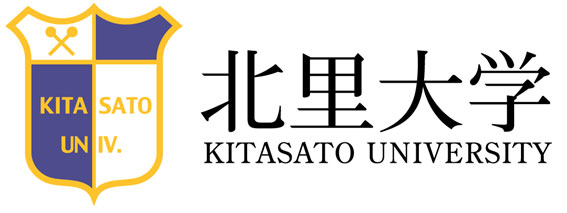Press Releases





JAMSTEC
KITASATO UNIVERSITY
UNIVERSITY OF FUKUI
HOKKAIDO UNIVERSUTY
FUKUOKA WOMEN’S UNIVERSITY
Elucidation of the mechanism that allows deep-sea mussels to sustain the microorganisms that provide them with nutrients within their cells: How can deep sea mussels live without eating anything?
1. Key Points
- ◆
- The deep-sea bivalve Bathymodiolus japonicus acquires symbiotic bacteria into its cells by phagocytosis (*1) in its intracellular symbiosis (*2). The research group found that the protein complex mTORC1 (*3) is involved in the integration of intracellular nutrient-environment signals for the maintenance and digestion of the symbiotic bacteria.
- ◆
- They also newly found that mTORC1, which integrates various intracellular signals and regulates cellular functions, also plays a role in intracellular symbiosis.
- ◆
- Intracellular symbiosis is a biological phenomenon that has driven the evolution of eukaryotes, and mTORC1 may regulate intracellular symbiosis in other animals harboring microorganism, such as insects. Therefore, this research will provide important insights into the evolution of life and on the origin and maintenance of biodiversity.
【Supplementary Information】
- *1.
- A phenomenon in which cells engulf particles such as environmental microorganisms and foreign substances in intracellular vesicles (phagosomes).
- *2.
- Relationship in which symbionts coexist within the cells of the host.
- *3.
- Mechanistic/mammalian target of rapamycin complex 1 (mTORC1) is a protein complex that senses intracellular nutrient and energy status and regulates cell growth and proliferation through the synthesis of proteins, lipids, and nucleic acids.
2. Overview
The mechanism of the intracellular symbiosis in the bivalve B. japonicus (*4), which lives near methane-rich deep-sea sources, was studied by a joint research group of the Research Institute for Global Change, the Research Institute for Marine Resources Utilization, Institute for Extra-cutting edge Science and Technology Avant-garde Research of Japan Agency for Marine-Earth Science and Technology, School of Marine Biosciences of Kitasato University, School of Medical Sciences of Fukui University, Institute of Low Temperature Science of Hokkaido University, and Fukuoka Women's University. They were newly found that mTORC1, a regulatory protein complex that integrates host intracellular nutrient-environment signals, regulates the maintenance and digestion of symbiotic bacteria.
Bivalves and other animals live near deep-sea hydrothermal vents and methane-rich deep-sea seeps, which are considered important marine areas and have been identified as candidate offshore marine protected areas for biodiversity conservation. Many of these animals form symbiotic relationship with chemosynthetic bacteria (*5) (symbiotic bacteria) within the cells and obtain the organic material produced by the symbiotic bacteria (Fig. 1). However, the mechanism by which the host animals acquire and maintain the symbiotic bacteria that produce the nutrients needed for their survival, and obtain the nutrients from the symbiotic bacteria has been a major mystery.
The research team has found that the B. japonicus acquires symbiotic bacteria in phagosomes formed by phagocytosis of the gill cells. It has newly found that mTORC1 was on the surface of the phagosome membrane enclosing these symbiotic bacteria, recognizes and controls the degradation and maintenance of the bacteria for sensing the nutrients from symbiotic bacteria. This is the first study of its kind, and the study findings provide entirely new evidence that mTORC1 plays an important role in the intracellular symbiosis. mTORC1 is present in many living organisms and plays a role as a central regulator that controls various functions of cells. Therefore, the findings are significant outcome for understanding the function of mTORC1 and the establishment and evolution of the intracellular symbiosis. In the future, by focusing on studying the role of mTORC1 in regulating intracellular symbiosis, it is anticipated that a more detailed understanding will be achieved regarding the mechanisms underlying the establishment and evolution of intracellular symbiosis between animals and microorganisms.

Fig.1 Intracellular symbiosis in Bathymodiolus japonicus Most B. japonicus have an intracellular symbiotic relationship with chemosynthetic bacteria in their gill tissues. Chemosynthetic bacteria are taken in from the external environment and form a symbiotic relationship. (The figure created by Nariyuki Yoshihara)
The research results will be published in Science Advances on August 24, 2012 (JST).
The research was supported by a Grant-in-Aid for Scientific Research (17K07519, 20K06779, 19K06799) from the Japan Society for the Promotion of Science.
- Research Institute for Global Change, Japan Agency for Marine-Earth Science and Technology(JAMSTEC)
- School of Marine Biosciences, University of Kitasato
- Faculty of Medical Sciences, Life Science Research Laboratory, University of Fukui
- Institute of Low Temperature Science, Hokkaido University
- Research Institute for Marine Resources Utilization, Japan Agency for Marine-Earth Science and Technology(JAMSTEC)
- Department of Environmental Science, Fukuoka Women's University
- Institute for Extra-cutting-edge Science and Technology Avant-grade Research, Japan Agency for Marine-Earth Science and Technology(JAMSTEC) # Correspondence to: T. Yoshida
【Supplementary Information】
- *4.
- These are bivalves, like mussels and Mytilus galloprovincialis, belonging to family Mytilidae. Mussels have digestive tracts and eat planktons and other organisms as food. B. japonicus have mouths but shorter digestive tracts compared to other Mytilidae members. Therefore, they do not eat by themselves but are nourished by symbiotic bacteria that are hosted in their gill cells.
- *5.
- The process of synthesizing organic matter using the energy produced when microorganisms oxidize chemicals is called chemosynthesis. The bacteria that carry out chemosynthesis are called chemosynthetic bacteria.
contacts
- For this study
- Takao Yoshida, Senior Researcher, Research Institute for Global Change (RIGC), Marine Biodiversity and Environmental Assessment Research Center (BioEnv), Deep-Sea Biodiversity Research Group (DeepBio), JAMSTEC
University of Fukui School of Medical Sciences
- For press release
- Press Office, Marine Science and Technology Strategy Department, JAMSTEC
Office of General Affairs, The Kitasato Institute
University of Fukui School of Medical Sciences
Public Relations & Communications Division
Office of Public Relations and Social Collaboration
Hokkaido University
FUKUOKA WOMEN‘S UNIVERSITY
The Center for Strategic Planning